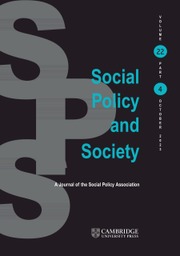Article contents
Colonial Disparities in Higher Education: Explaining Racial Inequality for Māori Youth in Aotearoa New Zealand
Published online by Cambridge University Press: 14 September 2021
Abstract
While recent research shows a gradual increase of young Māori in Higher Education it remains the case that inequality amongst the Indigenous population remains entrenched and institutionalised. This article explains how national governments in Aotearoa New Zealand have failed to address the colonial disparities and inequalities in the Higher Education system. In this process we will show, through the lens of historical privilege and institutional racism, how these processes continue to shape and frame both opportunities and experiences for Māori youth. The article will also highlight what strategies are needed if a more inclusive Higher Education system is to be developed that addresses the disparities that young Māori encounter.
- Type
- Article
- Information
- Social Policy and Society , Volume 21 , Issue 1: Themed Issue: ’Race’, Learning and Teaching in Social Policy , January 2022 , pp. 80 - 92
- Copyright
- © The Author(s), 2021. Published by Cambridge University Press
References
- 6
- Cited by




